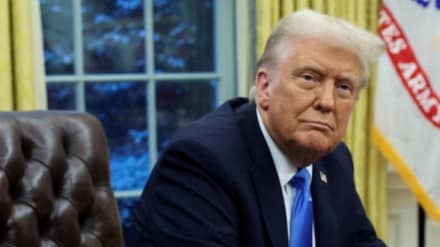The Donald Trump administration has taken significant steps to curb Chinese investment in key American industries, further straining relations between the two economic giants. In a recent memorandum, President Donald Trump directed the Committee on Foreign Investment in the US (CFIUS) to impose tighter restrictions on Chinese spending in technology, energy, and other strategic sectors, reports Bloomberg.
The move aims to safeguard what the administration describes as “the crown jewels” of American technology, food supplies, farmland, minerals, natural resources, ports, and shipping terminals. By labelling Beijing a “foreign adversary,” the administration signalled a more aggressive stance toward Chinese economic influence in the US.
Call for Mexican tariffs on Chinese goods
In a bid to counter China’s efforts to bypass US tariffs, the Trump administration urged Mexico to impose levies on Chinese imports. This development follows a pattern of Chinese firms shifting their production to Mexico to avoid duties imposed by Trump during his first term. By pressuring Mexico to take action, the US hopes to close this loophole and further limit China’s economic manoeuvring.
Fees on China-made commercial ships
Another measure introduced by the administration includes a proposal to impose fees on commercial vessels manufactured in China. The move is designed to weaken China’s dominance in the global shipping industry. This announcement led to a decline in Chinese shipping stocks on Monday, while the country’s benchmark CSI 300 Index slipped 0.2%. The onshore yuan, however, rose 0.1% to 7.2480 against the US dollar in Shanghai.
Taken together, these moves mark some of the most forceful economic actions of Trump’s second term, raising concerns about the feasibility of a future trade deal aimed at reducing China’s trade surplus with the US. China had previously hoped to use large-scale investments in the US as a bargaining chip in negotiations, but the new restrictions cast doubt on that possibility. Martin Chorzempa, a senior fellow at the Peterson Institute for International Economics, noted that this shift is likely to be a disappointment for Beijing and raises questions about whether the US would welcome Chinese investment in any form.
Decline in Chinese investment in North America
China’s investment in North America has plummeted, with levels at the end of last year dropping below those seen during the height of the pandemic. Many potential investors had been waiting for the outcome of the US presidential election before making decisions. Now, with these new restrictions in place, the road to economic recovery for Chinese investments in the US appears even more challenging.
Beijing’s response
Following the release of the memorandum, China’s Ministry of Commerce urged Washington to stop using economic and trade policies as a weapon. Beijing warned that increased scrutiny of business ties on security grounds could severely undermine Chinese companies’ confidence in investing in the US.
US-China tax treaty
The Trump administration’s crackdown does not stop at trade and investment restrictions. The recent memorandum also suggests that the US government should review a 1984 tax treaty with China, which currently prevents individuals and businesses from being taxed twice on income earned in both countries. Eliminating this agreement could introduce significant uncertainty for investors. “Eliminating these kinds of treaties just makes things very uncertain and complicated for investors because they do not know if they are going to be taxed,” said Chorzempa.
